Cape to Cairo Journey:
Pages to Explore:
Blog Catagories:
Photo of the day








Home | About Us | Safaris & Photographic Trips | Blog | Contact Us | Sitemap | Disclaimer
The Essence of the Journey!
We would like to do this trip to experience new cultures.
We would like to understand what makes African people pure.
What are their spiritual beliefs, understandings?
How does the spiritual world we know exist to them?
What can we learn from them?

Sep 21 12
Rhino day 22 September – do
The worldŌĆÖs rarest rhinoŌĆÖs, Grevy serious
We set off northwards, to Lewa and Ol Pejeta, probably 2 of the most important privately owned rhino sanctuaries in the country.┬Ā Thanks to Pete Behr of Afica Exposed, we were very well received by the Craig family.┬Ā Lewa was established by Anna Merz and Mzee David Craig in the 1980s
Lewa is a stronghold for GrevyŌĆÖs Zebra, the worldŌĆÖs rarest, holding 87% of the worldŌĆÖs population.┬Ā Danica & Nicolai were honoured to be some assistance in the lab doing some analysis on the faeces of Grevy.┬Ā The study funded by Denver Zoo was being run by Elizabeth and her assistant Megan and they were in the process of establishing the reason why foals were not as successful as other zebras before reaching maturity.┬Ā
Forty percent donŌĆÖt reach adulthood.┬Ā Early results show that there are a higher percentage of parasites like bloodworms in their faeces.
Edward took us around, a top bloke and very proud of his work and staff.┬Ā Being charged with looking after the animals at Lewa is a job held in high esteem, and certainly not easy.┬Ā Each of the northern black rhinos is ear notched and known personally by the scouts.┬Ā There are area scouts working in particular grids in which they count and monitor the rhinos on a daily basis.┬Ā In the event of a rhino not being seen after 4 days in a particular grid, they then dispatch a plane that will fly sects until the rhino is found.┬Ā
As at September 2012, there are only 623 northern black rhino left in the wild.┬Ā Lewa importantly has around 80 northern blacks and 58 southern whites.┬Ā LewaŌĆÖs northern black rhino population has increased from 14 in 1991 to 80 in 2012. Having 9 births in 2011, Lewa together with their top notch security systems is approaching ecological carrying capacity.┬Ā Poaching remains a threat, and unfortunately during the first week of September 2012, they lost a northern black to poachers.┬Ā Discussing the Rhino Rescue Project treatment (RRP) was therefore well received.┬Ā The continual pressure and threat that Lewa staff are under whilst looking after these animals was also highlighted.
This northern region of Kenya, includes an area known as Laikipia and holds 87% of the northern black rhino population.┬Ā It is here too that the last viable populations of the hirola antelope remain.
The Craig family together with Ana Merz were the founding patrons of Lewa.┬Ā It was moving, meeting Ian Craig and Batian who are actively involved in the region, a top class family.┬Ā Ian, now a mature conservationatist, recently cracked ribs and punctured a lung whilst working close to the Somali border setting up a controlled conservation area for the hirola antelope. He is the active leader in the Northern Rangelands Trust of which one of the aims is to increase wildlife areas in which to release rhinos.
John Pameri is LewaŌĆÖs Chief Security Officer, and together with Mike Watson (CEO), they head LewaŌĆÖs ┬Āable team.┬Ā The success of the Northern Kenya Rangelands is dependent on their joint co-operation, and together with Ol Pejeta, Lewa are two of the flagship conservation areas.┬Ā Ol Pejeta has a different model where they combine farming activities successfully with conservation areas.┬Ā Ol Pejeta is an area of just over 365km2 and they have 91 Northern Black Rhino.┬Ā Ol Pejeta last had a poaching incident in February 2012 and with Daniel and Batian Craig in charge of security the population is on the increase.┬Ā Rhino Rescue Project will work well at Ol Pejeta and Lewa and we have undertaken to work together with Kenya Wildlife Services.┬Ā
conservation areas.┬Ā Ol Pejeta has a different model where they combine farming activities successfully with conservation areas.┬Ā Ol Pejeta is an area of just over 365km2 and they have 91 Northern Black Rhino.┬Ā Ol Pejeta last had a poaching incident in February 2012 and with Daniel and Batian Craig in charge of security the population is on the increase.┬Ā Rhino Rescue Project will work well at Ol Pejeta and Lewa and we have undertaken to work together with Kenya Wildlife Services.┬Ā
Daniel took us to see the rarest sub-species of rhino, the Northern White.┬Ā The total population of Northern WhiteŌĆÖs worldwide is 7.┬Ā There are 4 at Ol Pejeta, and 3 others in zoos in Europe.┬Ā They are larger than the Southern White Rhino, probably by as much as 30%.┬Ā This was really an eye-opener and a privilege.┬Ā┬Ā┬Ā┬Ā
Rhino Conservation in South Africa vs the rest of Africa
The biggest difference between South & East is that in South Africa landowners own the rhino on their property whilst in other parts of Africa, the state owns the rhino.┬Ā Approximately 25% or 5 000 rhino are privately owned in South Africa.
Places like Kenya have privately owned rhino sanctuaries.┬Ā In places like these the land is privately owned, however the rhino are still owned by the state.┬Ā In these instances, veterinarians are dispatched by the state in time of need and a good working relationship between KWS and land owner is critical.┬Ā It may be argued that this model is unlikely to work well in poorer countries, where national parks are under-funded. However in sanctuaries such as Ol Pejeta and Lewa, they are standout examples of this model working.┬Ā Rhino populations have increased 5 fold in the last 30 years, and they are now able to re-locate rhinos to areas where they need to increase existing populationŌĆÖs genetic diversity, or have occurred historically.
In South Africa many are pro de-horning.┬Ā The Private rhino owners are in favour of trade in rhino horn, including stock-piled and harvested horn.┬Ā Studies have shown different results.┬Ā Some that the harvested horn will satisfy the demand for rhino horn.┬Ā Others that within only 4 days the stock-piled horn will be sold and demand will resume.┬Ā This is to a large extent irrelevant because with the rhino listed on CITES Appendix 2, trade in rhino & rhino products is not possible.
Irrelevant of whether Africans should have title to their rhinos or not, rather put the rhinoŌĆÖs interests first until such time as the poaching is under control.
South Africa could argue that their conservation methods have worked over the years, with Dr Ian Player having rescued the rhino from the brink of extinction.┬Ā Over the last 30 years, we have built our population up, but having lost 448 in 2011, we are now losing more rhino than are being born.
The hunting of Rhino in South Africa is proving a serious red flag to conservationists world-wide.┬Ā Thoughts are simple; how can anyone condone the hunting of an endangered species, especially when the poaching problem is so way out of control?┬Ā People are dying on duty, protecting these animals.┬Ā The hunting of Rhino in the rest of Africa is ŌĆśillegalŌĆÖ.
The Rhino Rescue Project is a refreshing option.┬Ā Those that are true conservationists, that are interested in conserving a species as opposed to using the species as a commodity, can now show off their true colours.┬Ā This is an opportunity for rhino conservationists world-wide to stand together and say no to poaching.┬Ā By treating the worldŌĆÖs remaining rhino population, we can destroy the market for rhino horn forever.┬Ā No market, no rhino poaching.
If I had one wish for rhino day on the 22nd of September, it would be let us forget our egos and focus on the case at hand ŌĆō rhinos need our help globally, let us stand together and move together, with a united goal.
┬Ā



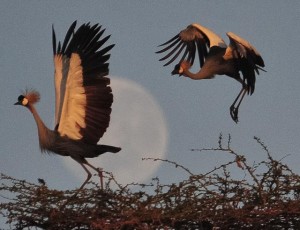
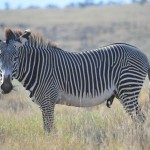
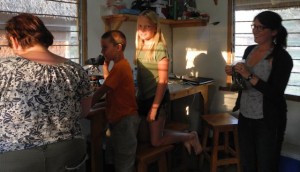
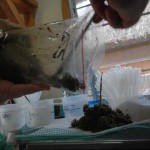

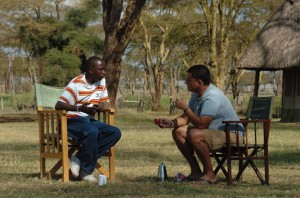
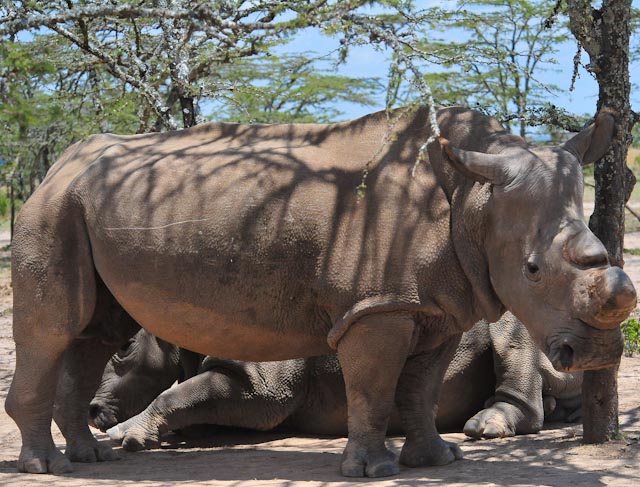


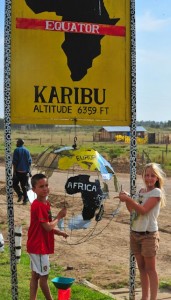



Marcello you are looking fit and healthy in the photo. Blogs are all good. Your adventure seems to running a lot smoother? Fantastic! All the best colin
Thanks china, appreciate your good wishes.